Classic Pot Roast Recipe
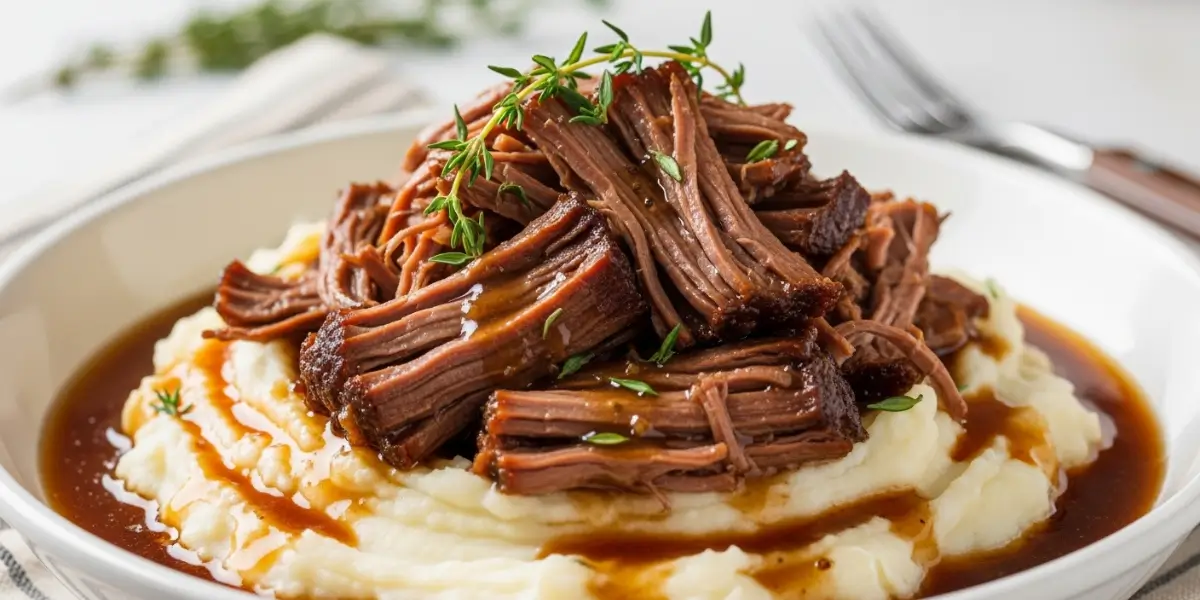
There’s a certain magic that happens when a pot roast is in the oven. It’s not just the mouthwatering aroma of garlic, herbs, and seared beef that slowly permeates every room. It’s the feeling of home. It’s the promise of a meal where conversations flow easily and seconds are mandatory. This iconic dish is more than just food; it’s a warm hug on a plate, a centerpiece for Sunday dinners, and a testament to the power of slow, patient cooking. But achieving that dreamy, fall-apart-with-a-fork texture and deeply developed flavor can feel like a secret only your grandmother knew. What if you could unlock that secret every single time?
You can. This guide is your all-access pass to pot roast perfection. We’re going beyond a simple list of ingredients and diving into the why and how that transforms a humble cut of beef into a legendary pot roast. Whether you’re a seasoned cook or a nervous newbie, this comprehensive walkthrough will give you the confidence and knowledge to create a masterpiece. Forget dry, tough roasts forever. Let’s dive in and craft the most unforgettable pot roast of your life.
Why a Classic Pot Roast is the King of Comfort Food
Before we preheat the oven, let’s understand what makes this dish so special. A great pot roast isn’t just about following steps; it’s about embracing a cooking philosophy centered on patience and layering flavors.
🍖 Classic Pot Roast Recipe
Tender, slow-cooked comfort food perfection
Recipe Information
Ingredients
- 3-4 lb beef chuck roast
- 2 tablespoons olive oil
- 1 large onion, quartered
- 4 carrots, cut into chunks
- 4 celery stalks, cut into chunks
- 6 cloves garlic, minced
- 2 cups beef broth
- 1 cup red wine (optional)
- 3 tablespoons tomato paste
- 2 bay leaves
- 4 sprigs fresh thyme
- 1 tablespoon Worcestershire sauce
- Salt and black pepper to taste
- 3 tablespoons flour (for gravy)
- 3 tablespoons butter (for gravy)
Cooking Instructions
- Season the beef chuck roast generously with salt and black pepper on all sides.
- Heat olive oil in a large Dutch oven or heavy pot over medium-high heat.
- Sear the roast for 4-5 minutes per side until deeply browned. Remove and set aside.
- In the same pot, sauté onions, carrots, and celery for 5 minutes until slightly softened.
- Add minced garlic and tomato paste, cooking for 1-2 minutes until fragrant.
- Pour in red wine (if using) and scrape up browned bits from the bottom of the pot.
- Add beef broth, Worcestershire sauce, bay leaves, and thyme sprigs.
- Return the roast to the pot, ensuring it’s partially submerged in liquid.
- Cover and cook in a preheated 325°F (165°C) oven for 3-3.5 hours until fork-tender.
- Remove roast and vegetables. Strain cooking liquid and skim off excess fat.
- Make gravy by melting butter in a saucepan, whisking in flour, then gradually adding strained liquid.
- Simmer gravy for 5-7 minutes until thickened, stirring constantly.
- Slice or shred the pot roast and serve over mashed potatoes with gravy and vegetables.
Editorial Review
✓ Pros
- Incredibly tender and flavorful meat
- Perfect comfort food for family gatherings
- Rich, savory gravy enhances every bite
- Leftovers reheat beautifully
- Minimal active cooking time
- Vegetables cook alongside for complete meal
- Budget-friendly cut of meat
✗ Cons
- Requires several hours of cooking time
- Not suitable for quick weeknight dinners
- Dutch oven or heavy pot required
- Higher calorie count per serving
- Can be fatty if not trimmed properly
- Needs advance planning
The Unbeatable Science of Braising
At its heart, a pot roast is a braise. This cooking method uses both dry and moist heat. You first sear the meat (dry heat) to create a flavorful, caramelized crust through the Maillard reaction. Then, you slowly simmer it in a covered pot with a small amount of liquid (moist heat). This slow, gentle cooking breaks down the tough collagen in the meat’s connective tissues, transforming it into rich, silky gelatin. The result? Meat that is incredibly tender and bathed in its own luxurious sauce.
More Than a Meal: A Nostalgic Experience
A perfectly cooked pot roast is an experience. It’s a dish that demands to be shared. It encourages you to slow down, put your phone away, and connect with loved ones over a steaming platter of comfort. The very process of making it the chopping, the searing, the long, anticipatory wait is a ritual that builds appreciation for the meal to come.
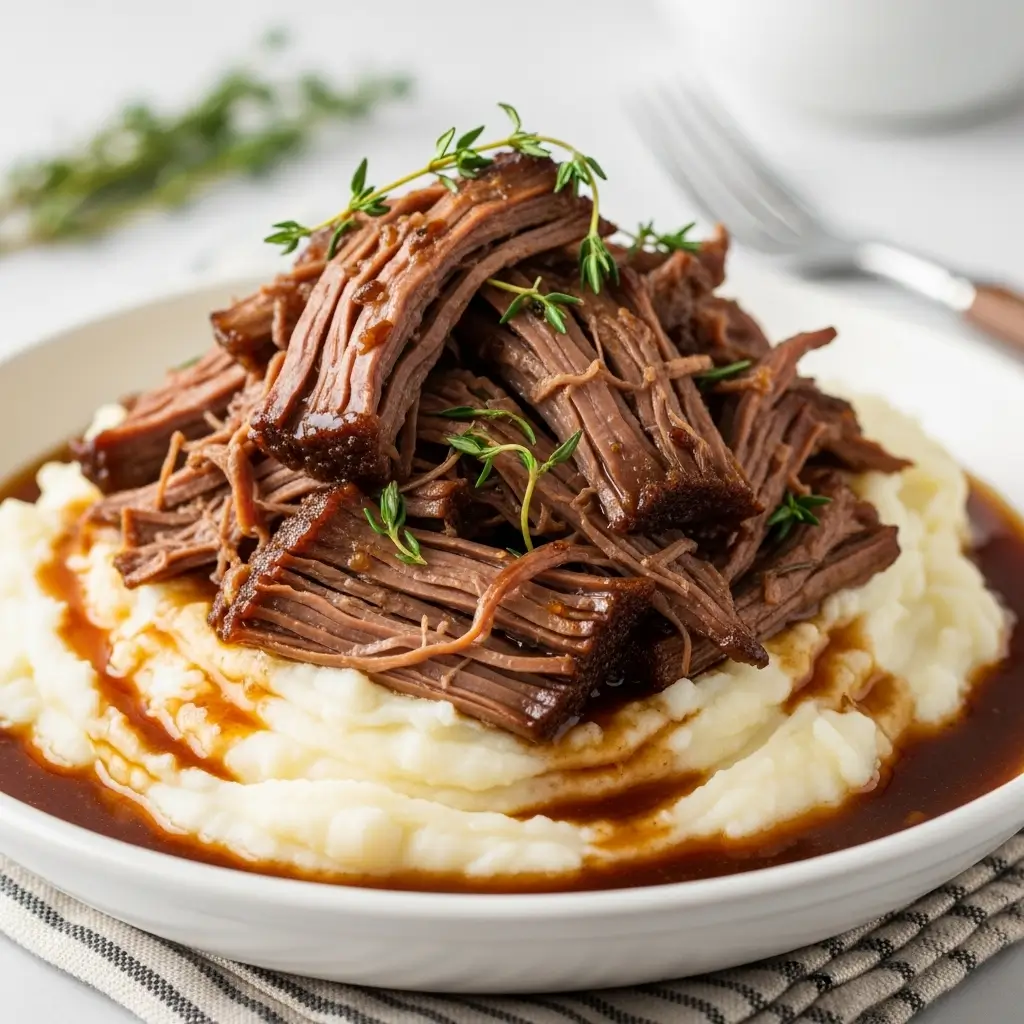
Incredible Versatility for Any Cook
The beauty of a classic pot roast recipe is its adaptability. It’s a fantastic canvas for your culinary creativity. Don’t have red wine? Use extra broth. Love mushrooms? Toss them in. Out of fresh thyme? Rosemary works wonderfully. This forgiving nature makes the perfect pot roast accessible to everyone, regardless of their skill level or what’s currently in the pantry.
Choosing the Perfect Cut of Meat for Your Pot Roast
You can follow every step perfectly, but if you start with the wrong cut of meat, you’ll never achieve that fall-apart texture. The ideal pot roast comes from a well-exercised, tough, and well-marbled part of the animal. These cuts are made for braising.
Chuck Roast: The Undisputed Champion
The chuck roast, cut from the shoulder and neck region of the cow, is the gold standard for a reason. It’s marbled with fat and full of connective tissue. As it cooks low and slow, that fat renders and the tissue melts, resulting in an exceptionally flavorful and tender pot roast. It’s forgiving, widely available, and consistently delivers the best results.
Brisket: A Flavorful Alternative
Brisket is another fantastic option, famous for its use in barbecue. It’s a leaner cut than chuck but still has a significant amount of connective tissue. When braised for a long time, it becomes incredibly tender and slices beautifully. It can be slightly less forgiving than chuck, requiring a very long cook time to avoid toughness, but the beefy flavor is unparalleled.
Round Roast: A Leaner (But Trickier) Option
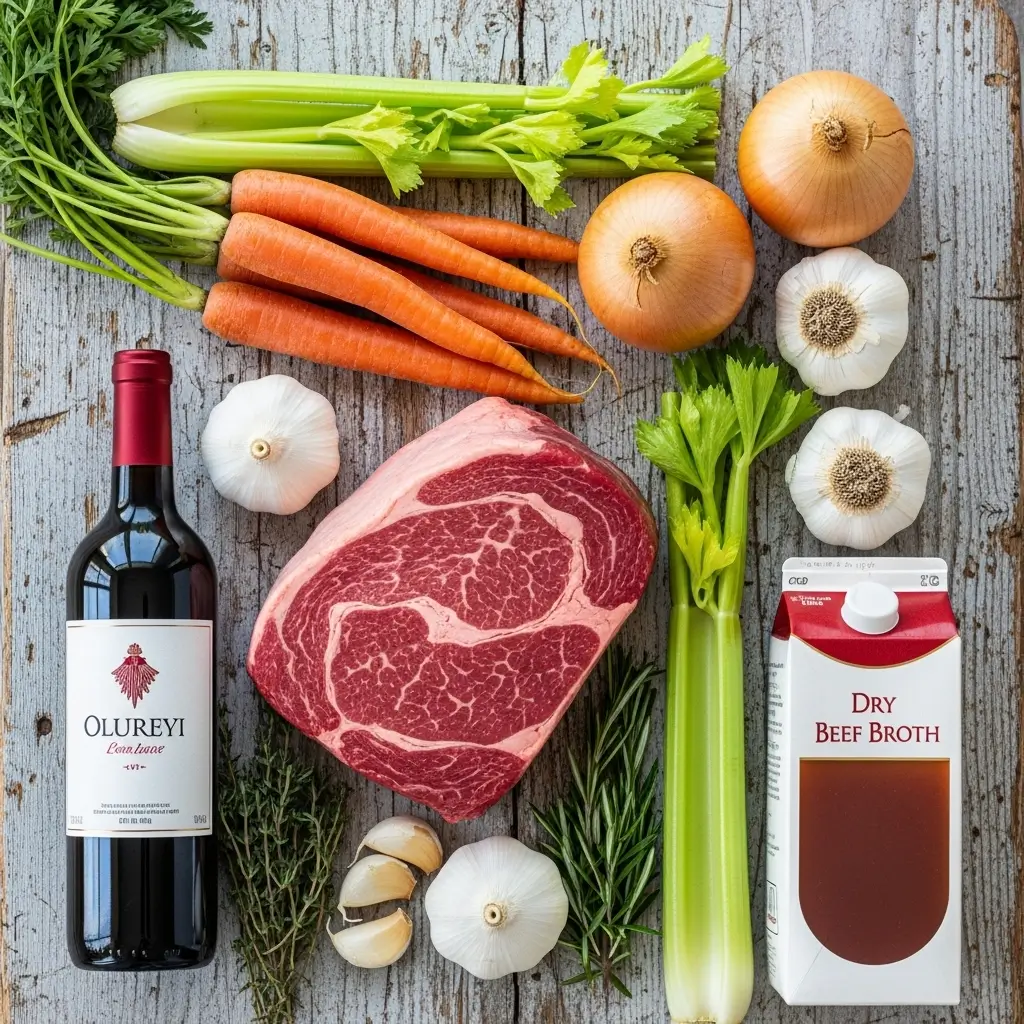
Cuts from the round (like top round or bottom round/rump roast) are much leaner. While they can be used for a pot roast, they are far more prone to drying out because they lack the necessary marbling. If this is your only option, be extra vigilant about not overcooking it, and consider brining it beforehand to help retain moisture.
| Cut of Meat | Characteristics | Best For | Watch Out For |
|---|---|---|---|
| Chuck Roast | Well-marbled, high connective tissue | The most forgiving and flavorful pot roast; falls apart easily | Can be fatty; requires skimming fat from sauce |
| Brisket | Beefy flavor, less marbled, slices well | Those who prefer a sliceable, intensely beefy roast | Can be tough if undercooked; requires longest cook time |
| Round Roast | Very lean, less connective tissue | A leaner pot roast (if cooked carefully) | Easily becomes dry and tough; not recommended for beginners |
The Step-by-Step Method for a Perfect Pot Roast
This is the core method for a traditional, oven-braised pot roast. Master these steps, and you’ll have a flawless foundation.
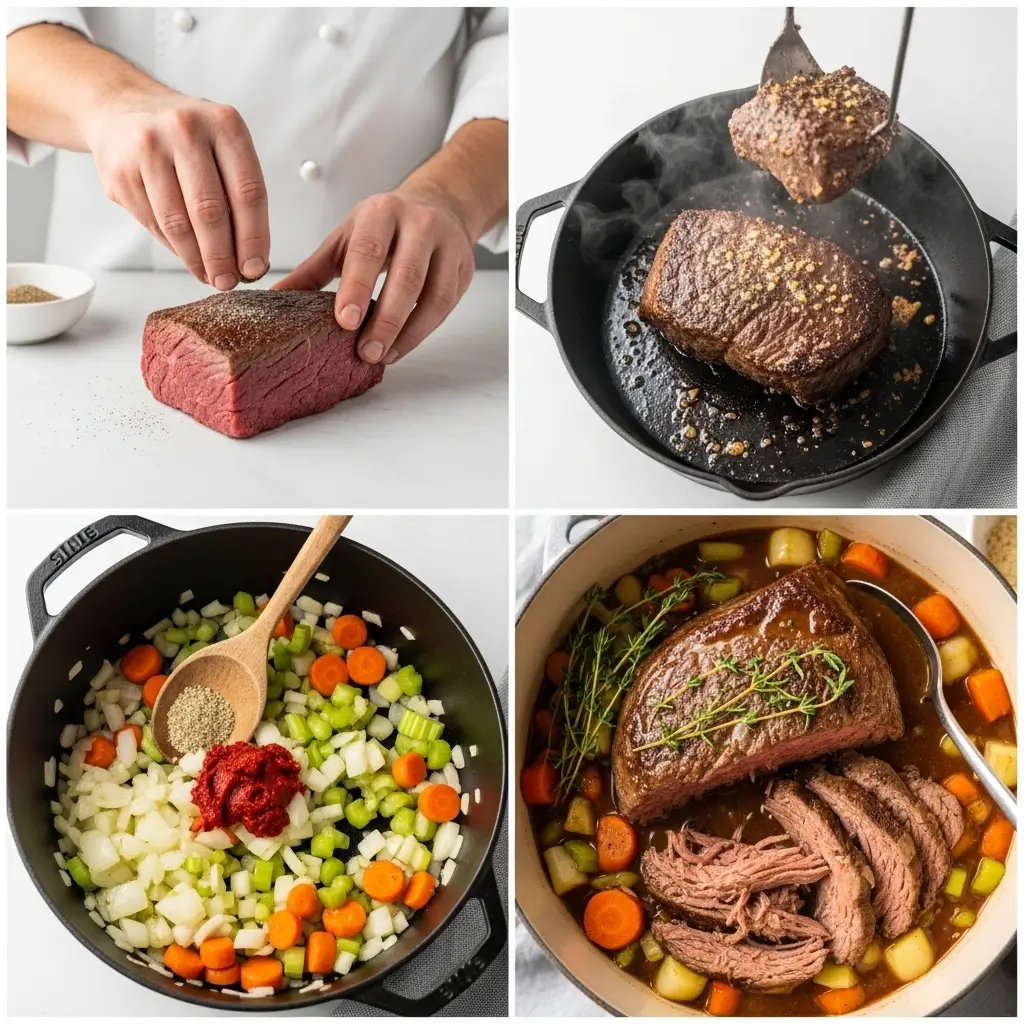
The Non-Negotiable Sear
Do not skip this step! Searing the roast on all sides in a hot, heavy-bottomed Dutch oven is not just for color; it’s for flavor. The browning creates hundreds of new flavor compounds through the Maillard reaction. These compounds will dissolve into your cooking liquid, creating a deeply complex and rich sauce. Pat your roast completely dry with paper towels before searing to ensure a beautiful crust, not a steam.
Building a Flavor Foundation with Aromatics
Once the meat is seared and set aside, it’s time to build your flavor base. In the same pot, you’ll sauté a classic mirepoix onions, carrots, and celery. Scraping up the browned bits (the “fond”) from the bottom of the pot as you cook these vegetables is crucial. Those bits are pure flavor. Adding garlic, tomato paste, and fresh herbs like thyme and rosemary at this stage will further deepen the flavor profile of your pot roast.
The Low and Slow Simmer to Perfection
Now, return the seared roast to the pot, nestled on top of the vegetables. Add your liquid a combination of beef broth and a dry red wine like Cabernet Sauvignon is ideal until it comes about halfway up the side of the meat. You’re braising, not boiling. Bring it to a simmer on the stovetop, then cover it tightly with a lid and transfer it to a low oven (around 300°F / 150°C). Now, you wait. A good pot roast cannot be rushed. Plan for 3 to 4 hours, or until the meat is completely fork-tender.
Adapting Your Pot Roast: Oven, Slow Cooker, and Instant Pot
The classic oven method is sublime, but modern life demands flexibility. The good news? You can achieve a fantastic pot roast using your favorite appliance.
The Traditional Oven Method
As described above, this method provides the most consistent, all-around heat, leading to exceptional caramelization and flavor development. It’s the gold standard for a reason.
The “Set It and Forget It” Slow Cooker Method
Perfect for busy days. Follow the stovetop steps to sear the meat and sauté the aromatics this is vital for flavor, so don’t skip it just because you’re using a slow cooker. Then, transfer everything to your slow cooker and cook on LOW for 8-10 hours or on HIGH for 5-6 hours. The result is an incredibly tender pot roast, though the sauce may be thinner and require thickening at the end.
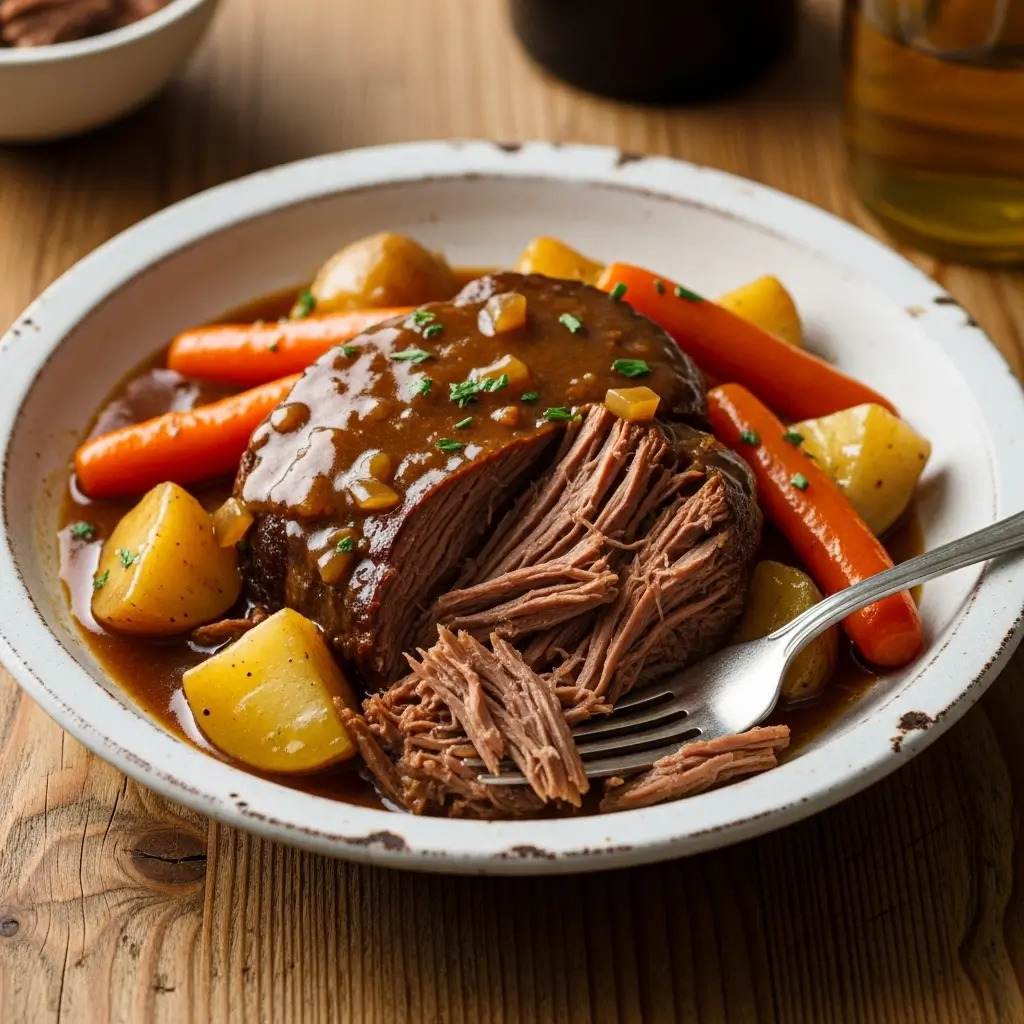
The Speedy Instant Pot Method
The Instant Pot (or pressure cooker) is a game-changer for a quick pot roast. Use the “Sauté” function to sear the meat and cook the vegetables. Add your liquids, secure the lid, and cook on High Pressure for 60-90 minutes, followed by a natural pressure release. You can have a tender pot roast in under two hours, though the flavor depth may be slightly less developed than the all-day oven version.
| Cooking Method | Cook Time | Best For | Key Consideration |
|---|---|---|---|
| Oven Braising | 3-4 hours | The deepest, most caramelized flavor; weekend cooking | Requires active monitoring; uses more energy |
| Slow Cooker | 8-10 hours (Low) | Hands-off cooking; busy weekdays; maximum tenderness | Searing is a separate step; sauce can be thin |
| Instant Pot | 60-90 mins (under pressure) | Speed; cooking from frozen; last-minute meals | Less time for flavor development; can overcook |
Conclusion: Your Journey to Pot Roast Mastery
Creating the perfect pot roast is a rewarding journey that hinges on a few simple but powerful principles: start with the right cut (look at you, chuck roast!), never skip the sear, and trust the low, slow, transformative power of braising. This isn’t just a recipe; it’s a technique that will serve you for a lifetime, yielding not just a meal, but a core memory. You now have the knowledge to adapt it to your schedule and taste, making this timeless classic truly your own.
So, what are you waiting for? Pick up a beautiful chuck roast this weekend, preheat your oven, and fill your home with that unforgettable, comforting aroma. You have everything you need to succeed.
We’d love to hear about your pot roast adventures! Share your tips, tricks, and family secrets in the comments below.
Frequently Asked Questions (FAQ)
Q1: Why is my pot roast tough and not falling apart?
A tough pot roast is almost always a sign of undercooking. The connective tissue hasn’t had enough time to break down into gelatin. The solution is simple: continue cooking. Return your pot roast to the heat and check it every 20-30 minutes until it easily shreds with a fork. Remember, a pot roast is done based on tenderness, not a timer.
Q2: Can I make a pot roast without wine?
Absolutely! While wine adds a lovely depth of flavor, you can make a delicious pot roast without it. Simply replace the wine with an equal amount of additional beef broth. For extra complexity, you could add a tablespoon of balsamic vinegar or Worcestershire sauce to the broth to mimic some of the acidity and umami that the wine provides.
Q3: What are the best vegetables to put in a pot roast?
The classic vegetables for a pot roast are sturdy root vegetables that can withstand long cooking without turning to mush. Onions, carrots, and celery form the base. Then, in the last 45-60 minutes of cooking, add chunks of potatoes (russet or Yukon Gold), parsnips, or turnips. This ensures they become perfectly tender without disintegrating into your beautiful sauce.
⭐ Customer Reviews & Ratings
Classic Pot Roast Recipe

